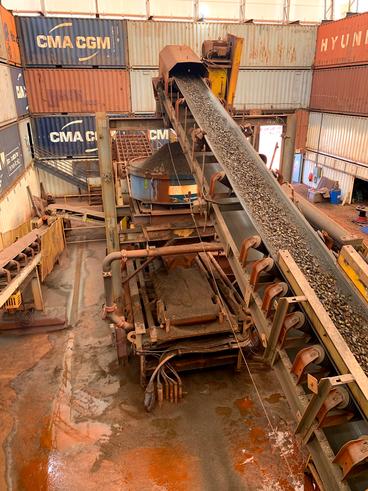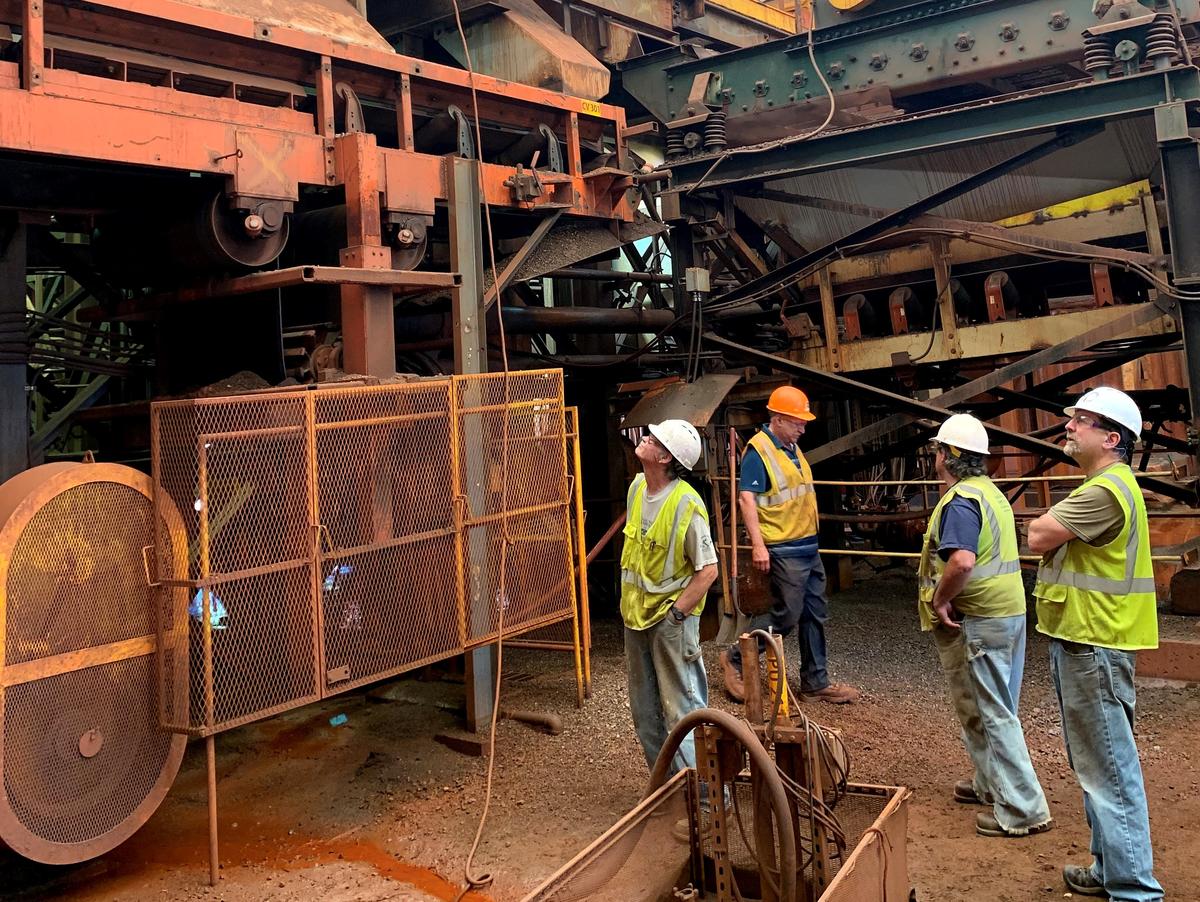An iron ore separation process invented and used for decades on the Iron Range, travelled to South Africa for some efficiency upgrades.
Now it’s back in Minnesota, on a trajectory to retrieve valuable iron ore from legacy mine tailings piles.
Johann Grobler, Prairie River Minerals Technical Engineer, worked with an industry/university team to develop the patented Ultra-High Density Media Separation (UHDMS) process along Africa’s North Cape, and recently engaged NRRI’s expertise and scale-up equipment to test it on western Mesabi Range ores.

The process makes lump and sinter ores for the steel industry with a practice known as ‘scram mining’. The company started trial operations out of the former Magnetation/ERP Iron Ore plant near Coleraine, Minn., in 2019.
This improved process can retrieve up to 30 percent more ore from the waste resources than currently used alternative processes.
“We need to show that the process works on a large scale before we take the next steps,” explained Grobler. “NRRI’s research facilities allowed us to make the products, test them and we found that they’re suitable for steel-making.”
This pilot level of research and development is key to attracting investors and customers to this start-up industry. Prairie River Minerals employs about 24 people in a plant running 24/7, with plans for continued growth.
“We have a large, international mining company investing in us, so we have big plans,” said Prairie River Minerals CEO Scott Conely. “But we’re doing this in steps. Everything is shipping through the Great Lakes so we also need to make sure the logistics work.”
The company is paying close attention to customer feedback on this new steel-making feedstock resource. Having NRRI out the back door – just a five-minute drive to the Coleraine facility – will help them get the research and testing necessary as they increase production.
The Ultra-High Density Media Separation process was successfully demonstrated at a 40 tons-per-hour pilot plant by Kumba Iron Ore in Gauteng, South Africa, followed by more improvements. Northern Minnesota’s ore mineralization is similar to that in South Africa, but there are always variations. That’s why onsite testing is crucial.
“They scaled up their plant to 10 times the pilot scale we did for them at our Coleraine site. That’s always a challenge,” said Kevin Kangas, NRRI site director. “And they did it during the COVID-19 pandemic, which was another layer of challenge for them.”
To understand the intricacies and scale of the project at the start, NRRI toured the Prairie River Minerals plant in June, 2020 with three NRRI technicians who provided the day-to-day, hands-on work during the pilot program. NRRI collaborated with the company on the pilot flowsheet and equipment installation using NRRI’s Business Assistance Fund, provided through the Blandin Foundation and supported by the Itasca Economic Development Commission.
NRRI processed approximately 100 tons of material from the Lind-Greenway Mine stockpile for lump and sinter ore testing.
“NRRI was key to this project,” said Conley. “We needed a pilot program to give our process credibility and to show that it’s viable. We’ve now done that and we’re looking forward to the feedback from customers.”
The first shipment of product is expected to ship out in this year.
The Prairie River Mineral processing facility itself is also very innovative. Built from steel shipping containers, it can be dismantled and moved, if necessary, to resources as they become available for processing. This efficiency will reduce fuel use and cost. When in place, the containers serve as warehouse, storage and workshop space.
“This is American ingenuity and engineering at work,” said Conley. “We’re running this plant on a small budget. But even as a small startup, we provide a positive impact to the communities in the area.”
